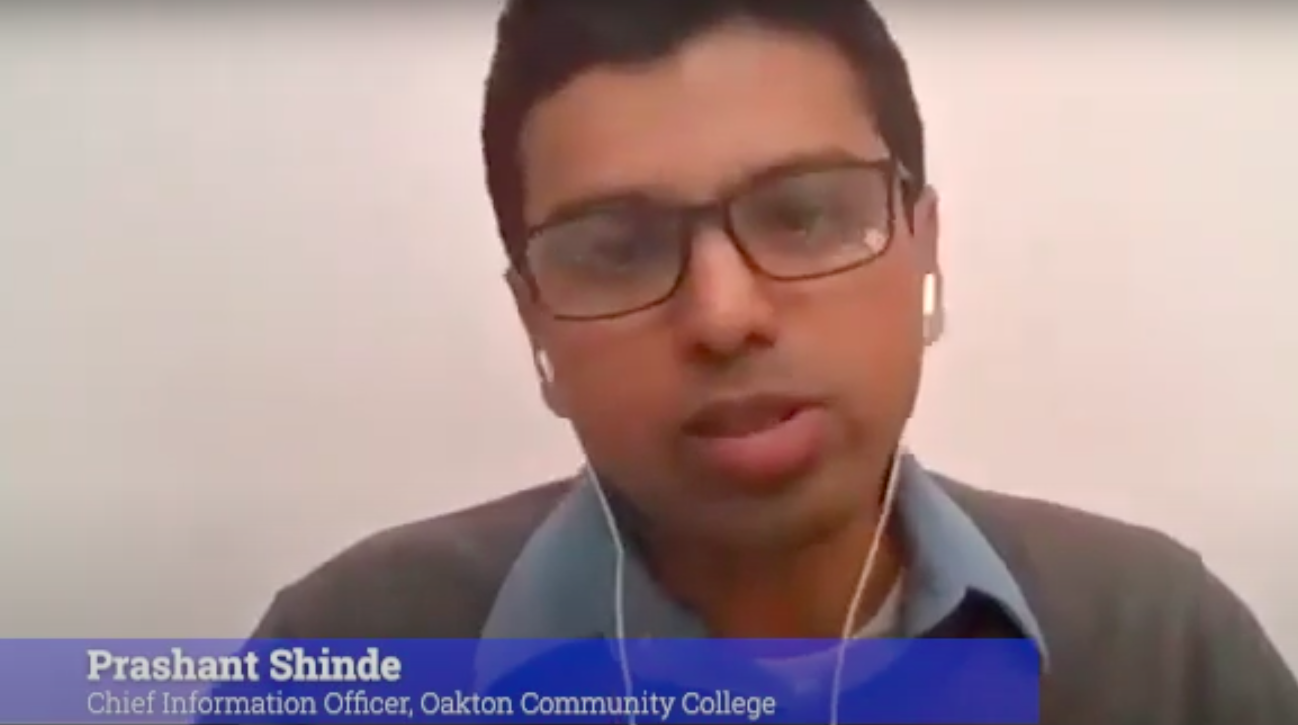About Oakton Community College
Oakton Community College is a public community college with two campuses in Illinois. Offering more than 2,500 courses each term, Oakton Community College creates access to a wealth of educational options in the heart of Chicago’s northern suburbs.
147-acre
main campus
46,000
credit and non-credit students
700
full and part-time faculty
80
associate degree programs
1,500+
continuing education courses
10
online degree and certificate programs
Despite a multitude of Continuing Education programs serving learners throughout northern Chicago, the student experience Oakton offered non-traditional learners wasn’t winning them over in the way it needed to.
After implementing Modern Campus’s Non-Traditional Student Management system, Destiny One, the college experienced a significant jump in online enrollments and greater student satisfaction. Here’s how they did it.
1. They Used Quick, Easy Registration to Boost Conversions
Prashant Shinde, Chief Information Officer at Oakton, said the school needed to have a single sign-on for learners. This wasn’t always the case at the college.
Problem: It Was Difficult for Learners to Find the Right Offerings
Prior to implementing Destiny One, a learner would have to spend inordinate amounts of time finding offerings they connect with or centralized key information on the offering of their choice. This obstacle, as Shinde noted, can be a make-or-break point for learners.
“You can’t expect a student to read an entire catalog to figure out what they want to do or what courses to take,” Shinde said.
Solution: Improving Registration Processes to Maximize Conversion for Learners
Since partnering with Modern Campus, students’ individual agency has increased dramatically. Shinde said registration is easier than ever, thanks to a website that more readily connects learners with offerings (and information about those offerings) they’re interested in.
“The student experience starts at how the student views the institution. So, we’re redesigning our website to focus more on prospective students,” he said. “We also want to use it to market the programs we have to offer. Once a student shows interest in a course, our system has made it easy for them to register and submit documents.”
Marc Battista, Associate Vice President of Workforce Education and Dean of Business & Career Technologies at Oakton, said the ease of exploring and registering for courses is paramount to the college.
“Since going live in November of 2020, we’ve seen a significant increase in online enrollment,” said Battista. “We’ve also heard from students how easy and seamless it is for them to explore, enroll and pay for their classes.”
2. They Let Learners Move Seamlessly Between Non-Credit and For-Credit Programming
Oakton realized that the future of learning isn’t in segmenting for-credit and non-credit learners but in seeing them as fluid demographics—degree-seekers shifting to shorter-term credentials and vice versa.
Problem: No Easy Path from Non-Credit to For-Credit Offerings
Battista said it’s important that students can jump between credit and non-credit seamlessly.
“They can upskill through CE while earning a degree,” he said. “If they want to change careers, they have that seamlessness to do so with the single sign-on. Allowing students to have that overarching experience is one of the most important elements we're striving for.”
Solution: Flawless Web Navigation, Registration Enable Fluidity Between Units
According to Shinde, pairing up with Destiny One has enabled effortless learner transitions between credit and non-credit streams—something he attributes largely to the system’s intuitive navigation, registration and payment processes, which mirror those of the best eCommerce companies.
“That transition between the credit and non-credit side is seamless. Students have the same resources, and the registration process is the same,” Shinde said, highlighting the snap-of-a-finger payment method as key to meeting learner expectations online. “Destiny One also hits it out of the ballpark with their registration and payment process.”
3. Their Registration System Integrates with Their ERP System
Shinde said one of Oakton’s key requirements for a registration system was to have it synchronize with their enterprise resource planning (ERP) system.
Problem: Insufficient Connection Between Key Systems
Not having harmony between their ERP and registration systems would result in complicated administration for staff and, potentially, for learners.
“We needed to have an integration with our ERP system,” Shinde recalled. “We didn't want two standalone systems to navigate, we wanted an easy transfer for files.”
Solution: Tailored Integration with ERP Systems Streamlines Administration
Shinde said that while Destiny One can be used to simplify administration of non-credit learning in its own right, the ability to integrate with their primary planning system adds new capabilities to the college’s non-credit unit.
“Destiny One is a great product; it can be a standalone product in the way that many community colleges are using,” he said. “But what’s great is that it can also integrate with an ERP system and third-party interior tools.”
As Shinde noted, this flexibility enables a degree of customization regarding how any non-credit unit wants to use the system.
“Sending data between Destiny One and our other tools increases our scope significantly,” he said. “It comes down to how the organization wants to implement and use Destiny One.” Shinde recognized that students benefit from this synchronicity as well.
“When you have a system that truly integrates with our core infrastructure, that student experience is seamless,” he said.

Putting the Student Experience First
Shinde has noticed that the better experience a student has, the more likely they’ll persist in their educational journey—bringing their institution along for the ride.
“It comes down to experience. We’re trying to keep students in the systems that they need to be in to make it easy for them,” Shinde said, adding that the ease of interaction with the college strengthens their connection with learners.
“Finding the right courses is so seamless and easy for students,” he said. “They aren’t getting lost anymore.”
Tackle your biggest challenges
About Modern Campus
Modern Campus is obsessed with empowering its 1,200+ higher education customers to thrive when radical transformation is required to respond to lower student enrollments and revenue, rising costs, crushing student debt and even school closures.
Powered by Modern Campus CMS, DIGARC, Presence and Destiny One, the Modern Campus modern learner engagement platform enables innovative institutions to create a “learner to earner” lifecycle that engages modern learners for life.
Delivering massive personalization, AI-driven recommendations and a modern e-commerce engine, Modern Campus creates a student-first digital experience and removes silos across campus. Presidents and provosts, marketing and IT teams, admissions, registrars, student affairs and CE divisions can partner to attract, enroll, empower, retain, credential and re-engage students with pathways for lifelong learning.
Learn how Modern Campus is leading the modern learner engagement movement at moderncampus.com and follow us on LinkedIn.